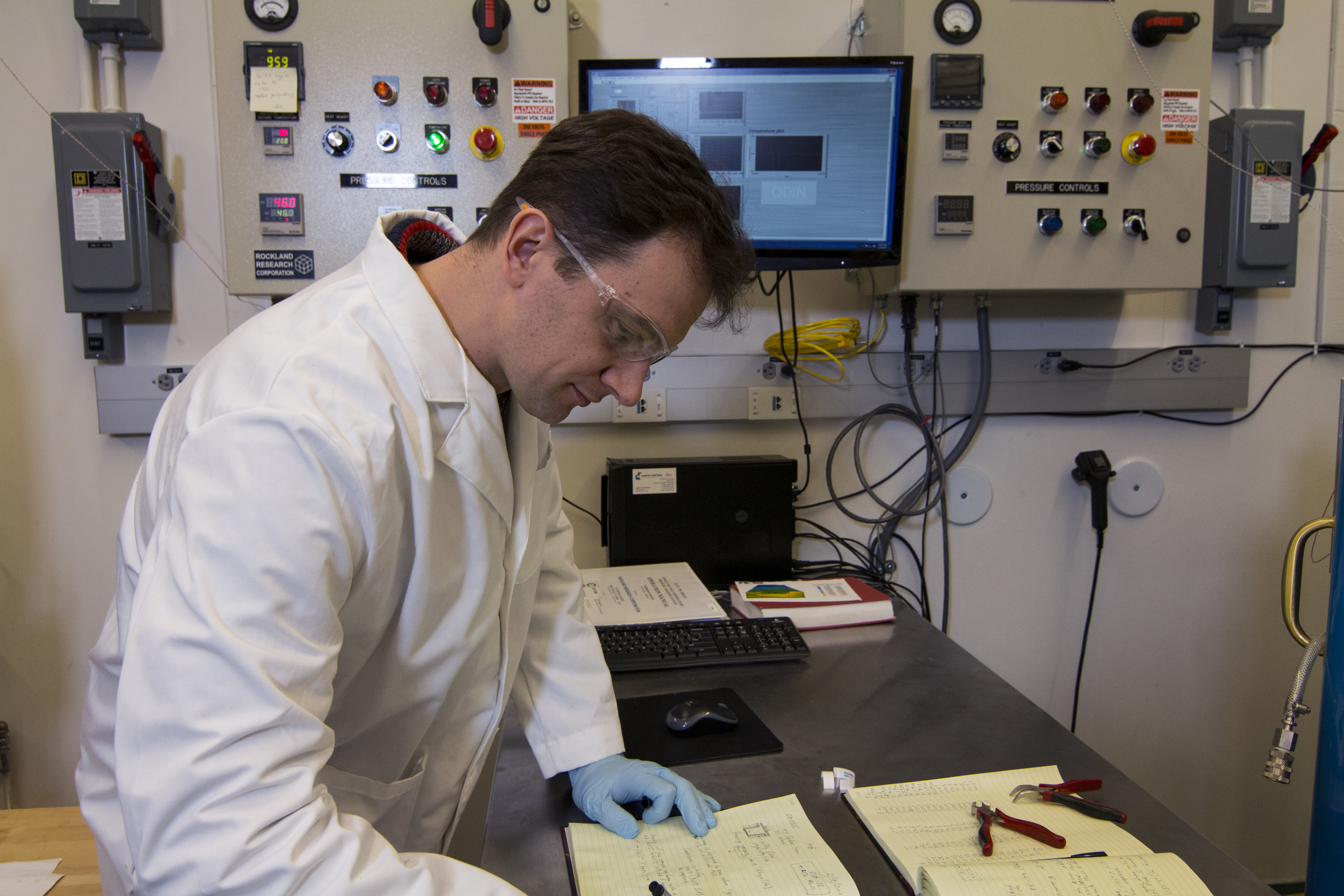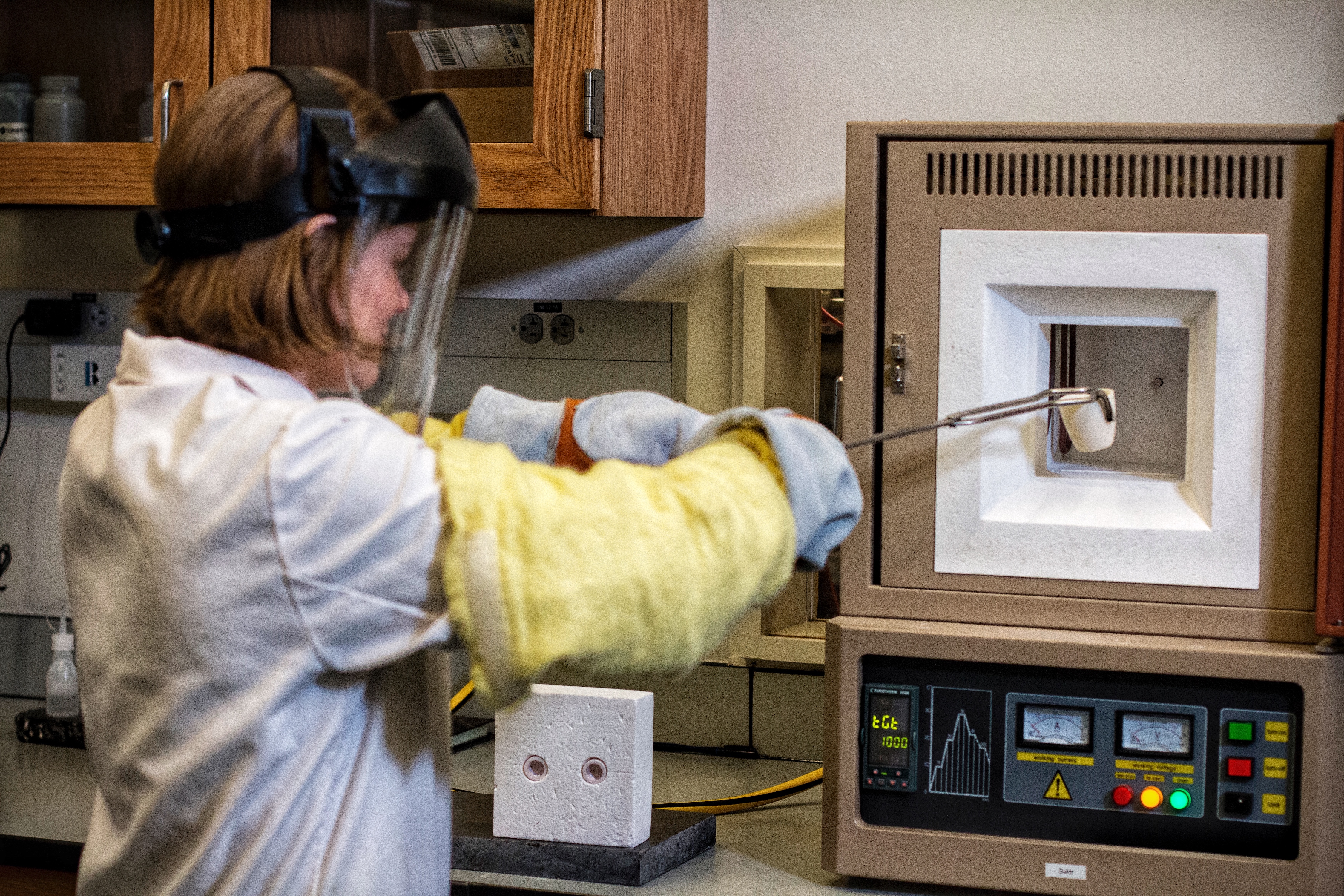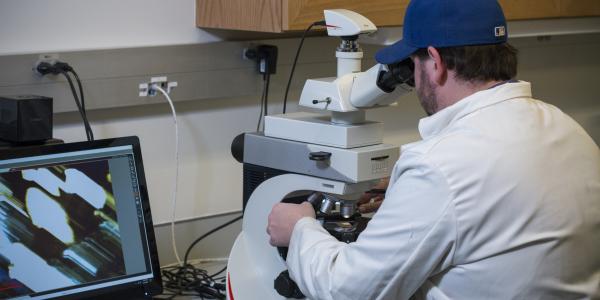Experimental geochemists at WashU recently discovered compelling evidence that magmas may be wetter than geologists thought.
Volatile elements in magma, primarily water, drive explosive volcanic eruptions. The tricky part is determining just how much volatile content was present before the eruption took place. This is especially difficult when the only evidence scientists have to go on is the end product after all the volatiles have been lost.
The most common method for determining volatile content requires studying melt inclusions, small pieces of magma trapped in crystals erupted in lava. Scientists study these glassy inclusions to determine the amount of hydrogen present, which, through back calculation, can indicate how much water was dissolved in the magma in Earth’s crust before a volcano erupted. This method is generally accepted as an accurate lower limit on volatile content, accounting for some water that might have been lost during the explosion itself.
Experimental geochemist Michael J. Krawczynski, assistant professor of Earth and planetary sciences at Washington University, in a study led by Maxim Gavrilenko of the University of Nevada at Reno, recently discovered compelling evidence that magmas may be wetter than geologists thought. Their paper, “The quench control of water estimates in convergent margin magmas,” is published July 2 in the journal American Mineralogist. In the paper, Krawczynski and Gavrilenko, formerly a postdoc in Krawczynski’s lab, deliver the findings of their experimental test of the upper limit of melt inclusion studies, which had not been investigated before. These findings have implications for understanding Earth’s water cycle and plate tectonics.

Krawczynski compared a melt inclusion to a rain gauge: “You put the graduated bucket out when it rains, and you look at it to say, ‘Ok, that’s how much it rained.’ With melt inclusions, the hope is that all the water that was in the magma gets trapped in the melt inclusion and brought to the surface relatively pristinely.” However, there are two major pitfalls to this method, Krawczynski explained.
First, some water is lost by diffusion out of the crystal during magma migration and the eruption. Krawczynski continued his rain gauge analogy: “This would be like if you have holes in the bucket, and some water is dripping out. What you measure then is a minimum.” Scientists have studied this problem extensively and now have a reasonably good idea of how many “holes” exist in melt inclusions and how large an effect those holes might have. These studies are concerned with determining the melt inclusion method’s lower limit.
In their experiment, Gavrilenko and Krawczynski looked at the upper limit for water in melt inclusions, addressing questions like: Can a melt inclusion contain all the water? If not, then by taking natural melt inclusions as the standard, are we introducing bias into our interpretations?
Krawczynski said, “What people have never looked at before and what we’re trying to measure now is, how big is this bucket? You can imagine if it rained a lot, and your rain gauge was full, then you don’t really know how much it rained. It could have rained more! We just can’t say.” The same is true of melt inclusions. If a melt inclusion can’t hold all the water, then scientists don’t have the right reading of the upper limit of water content in magma. The bucket is too small.
Gavrilenko and Krawczynski created synthetic melt inclusions in the lab to figure out how much water a melt could possibly hold. To do this, the researchers reproduced the temperature and pressure conditions that exist 40 kilometers below the surface of the earth. Next, they melted and quenched (rapidly cooled) the sample, then determined whether their experiment had created a glass. They continued the process, adding more and more water to the sample until the sample could no longer be quenched to form a glass. “We found out that if you have a lot of water, then eventually you don’t have a glass,” said Gavrilenko. These devitrified (non-glassy) melt inclusions exist in nature, but are preferentially not studied for volatiles, which has led to sample bias in this field of research.

This bias is especially problematic for scientists who are trying to understand how much water gets recycled back to the surface at subduction zones, which are richest in water compared to other tectonic settings. “If the deep magmas in these zones have more than 9 weight percent of water, then they won’t be correctly measured by the current gold-standard method,” Gavrilenko explained. “There is a need to find a new method for how to measure. We need a new, bigger bucket.”
Gavrilenko and Krawczynski found that glassy melt inclusions can’t indicate more than about 9% water by weight (wt%), and this upper limit appears in melt inclusions found in nature. This indicates that some magmas may be much wetter — and, thus, there is more water in Earth’s crust — than scientists had previously concluded. The upper limit on water content in magma, as determined by melt inclusion studies, was actually an artifact of quenching, the process of rapidly cooling from a liquid to a solid, rather than a real measure of what occurs in magma in nature.
This result aligns with recent work by Douglas A. Wiens, Robert S. Brookings Distinguished Professor in the Department of Earth and Planetary Sciences at Washington University. In a paper published in the journal Nature last fall, Wiens concluded that as much as four times more water might subduct into Earth’s mantle than scientists thought. Gavrilenko and Krawczynski’s work points to how the cycle of water in and out of the crust might be rebalanced in the wake of such discoveries. Krawczynski said, “If more is going down (into the mantle), more needs to be coming out back into Earth's crust. That’s what we’re looking at here. We’ve understood that it’s a cycle that needs to be balanced, but we haven’t had a good grasp of the sizes of the different reservoirs.”
Gavrilenko and Krawczynski’s experimental approach is new and challenges established standards—in a good way. “This is a case where the experimental approach provides the ability to create global conditions that might and do occur anywhere in the world. The limit is set by chemistry, not volcano or lab conditions,” said Krawczynski. “These experiments show us that as scientists we need to develop new tools that are capable of measuring high water contents in magmas. We don’t know how much water is actually there, but we do know that the current data is insufficient to answer the question that we thought we could answer,” he added. Understanding the water cycle on Earth has implications for understanding the evolution and existence of the oceans and plate tectonics, which differentiate Earth from other lifeless planets in our solar system. “We’re saying — in the aggregate — we can’t interpret this data as easily as we hoped, but we have learned something fundamental about the limits of our knowledge in this area.”




